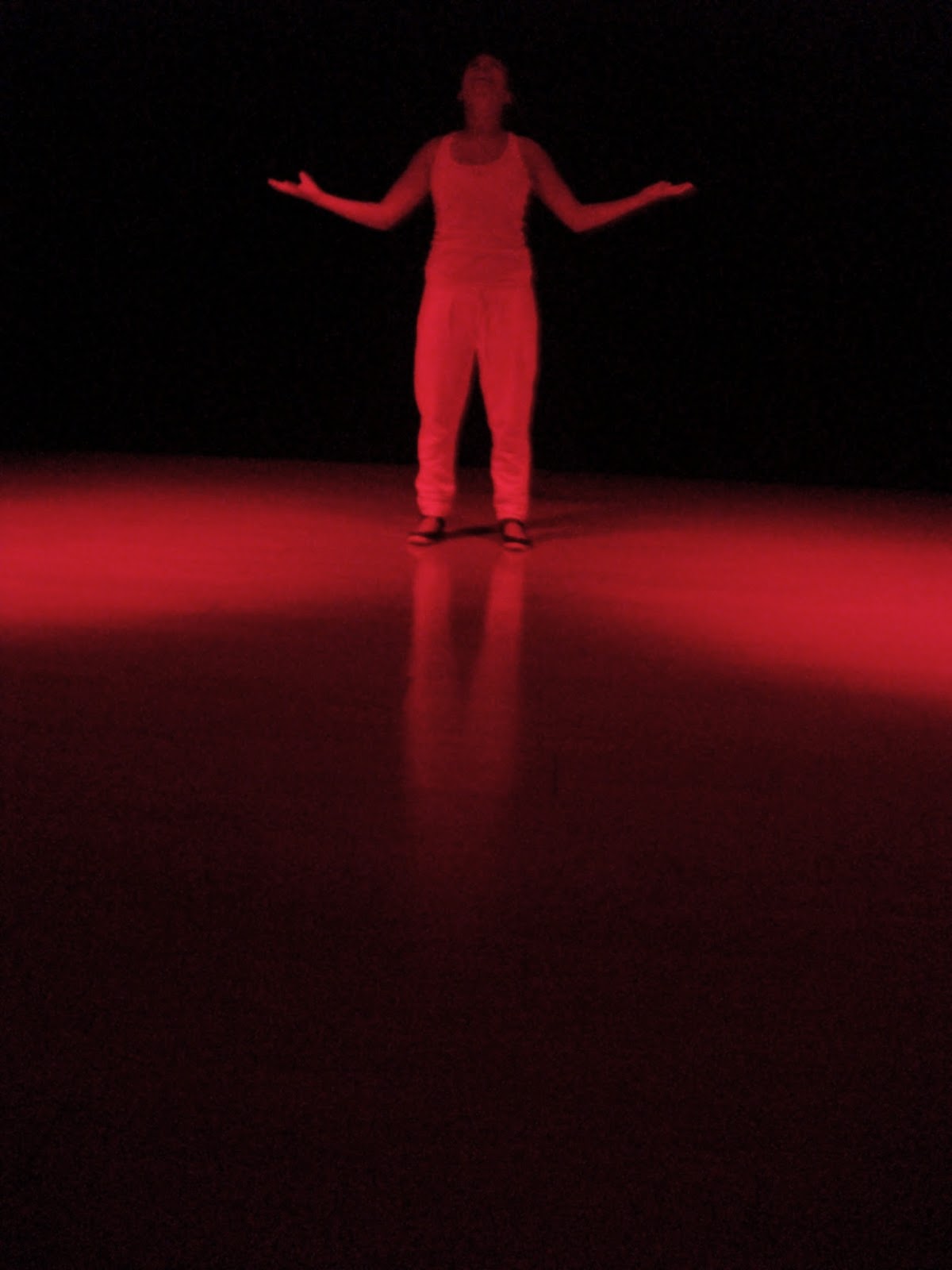Throughout my research I would like to explore the movement and observe where and how is changing its form and how far I can develop it in order to get something new. Consequently I am hoping to find, a pathway of movement that triggers new material, which enrich my knowledge over the movements’ structure and brings something new into being.
MARIANNA PANOURGIA.
ANDRONIKI MARATHAKI 4-5/7/14
TASK : "SHE" PART 2
I am sitting on a seaside bench with the rocks on my legs/the sea drives me towards her/the stones are slowly falling on the ground/I am play the game that I was playing as I was a child on the summer vacations/the stones passing through the one over the other with circular movements/the sound resemble to the sea-waves/it comes and goes/at some point the rocks incorporate into my body/the two whites are in my two hands/and the black one under my feet/I am thinking that I am on a seashell and dancing/it tough to balance/it is really hard/difficult/risky/I miss one rock for my other leg/it make sense/the rocks now are stuck into my joints/behind my left knee/inside my left elbow/in my right palm/and then I felt trapped / trapped into the sand/falling/lost..
M.P.
5/7/14
ΛΙΘΟΙ ΚΑΙ ΛΗΘΗ
LITHOS AND LETHE
LITHOS AND LETHE
Taking as a stimulus the task that was given to us(from androniki marathaki), to move-work and explore the using of a concrete material into our “dance” (for me it was three little rocks/stones), I started to wondering about why it was so difficult to me to incorporate this very common item to my personal movement vocabulary.
Looking back to our prehistoric routs we can easily observe that the humanity is based literary and metaphorical on rocks and stones. In the early ages human used stones widely in almost every aspect of their life. (Tools/ Nutrition) Stone Age artifacts include tools, implements with a sharp edge and as the ages were passing by the manufactures became more efficient and composite due to the increased need to harvest, hunt and fishing. (Habitat) In a neolithic village the community contained stone beds, shelves and even an indoor toilet linked to a stream.(Buildings/belief) In that age the first large-scale constructions were built, including settlement towers and walls e.g. Jericho and ceremonial sites e.g. Stonehenge. (Art/Music) Prehistoric art is visible in the artifacts petroglyphs and rock paintings.
Through the
ages and the centuries human detached from the basic element of our extinction
and evolution. We enter into the age of lithe. We became incapable of using –working-moving
with rocks and be familiar to this material. I am pondering about how is
possible for human to forget the acknowledgement of the using of the stones. Why
is so difficult to create rhythmical sound from rocks why is almost impossible
to create movement triggered from rocks and incorporate them into our dance?
Do we
really dive into our pre-existing bodily memories and uproot the knowledge? Is
it honest to test ourselves to “remember” somatically the heritage of the human
nature or we just re-invent and trying to re-produce and re-present the
kinesthetic memory as our body perceive through our sensations, psychological
awareness, mental images and kinetic phenomena? Do we really evolving or we
trying to perceive what we already (should) know? Is there a consciousness
decision to disconnect from our past or there a preconscious need of men to
seek new pathways away from what he know and understand?
M.P.
6/7/14
M.P.
6/7/14
ROBERT CLARK 7-8/7/14
EMPATHY : the capacity to recognize emotions that are being experienced by another sentient or fictional being. One may need to have a certain amount of empathy before being able to experience accurate sympathy or compassion.
We can access feeling without naration because the are relating.
We can incorporate emotion in an abstract way by using clear dynamics.
REAL: METAPHOR
TRUE : BELIVABLE
ANA SANCHEZ-COLBERG 1-2/7/14
Thoughts
about Ana Sanchez’s workshop
Just entering in space…which is the trace we leave behind?
Which is our trace?
Is it our presence the trace or is what is left behind at the moment of our disappearance?
Can we separate our present trace/mark from the footprint-the echo of our movement?
Can we separate the boat from the wake/estela?
What the movement as experience?
How can the experience of our trace lead us to our own methodology?
Which trace “represents” us?
Which trace leaves a clear mark of our existence?
Random
thoughts.
-
The movement itself carries memories. It can project to us ‘something’ (an instinct,
an image, a pattern, a sense, an emotion, a link) of our collective unconscious
memory with which we can be related with. Although we might not be able to understand
the movement or the concept or the emotions in some way we can identify the
truth of it (the movement), us if it was an archetype.
M.P. 13/7/14

